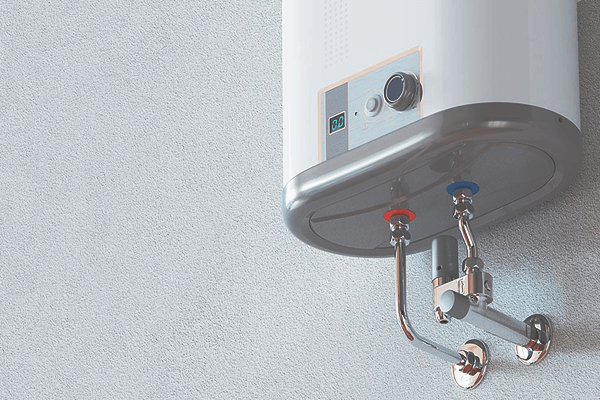Having hot water in our bathrooms during winter is a bliss we shouldn’t overlook. Back in the day, we couldn’t just turn on a faucet or fill a bathtub with hot water.
There used to be no water heaters, so people would fill their buckets with water, and then heat the water with fire. Once it reached a certain temperature, they would carry the water to their bathrooms. And before that, Romans used to build houses close to hot springs to have nice warm baths.
Using hot water was a luxury and a complex task. A water heater just had to be invented!

What you’ve been missing
Pool Heat Pump vs Gas Heater
Electric Pool Heater Vs Gas Heater
Contents
History of Water Heaters
If we look into water heater history, there are two names that pop up: Benjamin Waddy Maughan and Edwin Rudd.
Benjamin Waddy Maughan, an English painter, was the first to receive a patent for a water heater in 1868. It was a domestic water heater that used natural gas to heat water, but couldn’t vent gas fumes. As a result, the heater could not be used indoors.
Around 20 years after Maughan’s design, Edmund Rudd enhanced it with safety features in 1889. It was this process that led to what we know today as a water heater. In the following years, we saw the invention of electric, solar, and natural gas-fueled water heaters.
During the industrial revolution, many water heater manufacturers emerged. Many manufactured electric water heaters in the post-war era, with increasing demand due to their convenience and efficiency.
In 1970, tankless water heaters were introduced. These tankless water heaters use coils to heat water, but instead of storing heated water in a tank, they only heat water when needed. So, whether you’re always the last person to take a shower or not, a tankless system ensures that you won’t run out of hot water.
Types of Water Heaters
Today, you can find multiple types of water heaters such as gas-powered conventional water heaters, tankless/electric water heaters, solar-powered water heaters, heat pump water heaters, and condensing water heaters.
Conventional Gas Water Heater
Among the most common types of water heaters are conventional heaters. Their large insulated tanks are used for storing and warming water.
Pros
- A conventional water heater is much less expensive than any of the other four options, unless you choose an ultra-modern model.
- Regardless of the climate or where you live, conventional water heaters function perfectly.
- A conventional water heater costs less to install compared to alternatives.
Cons
- Constantly using energy to maintain the temperature of warm water is a problem with conventional water heaters.
- It’s impossible to escape the massive size of a conventional water heater. Their large size, which helps reserve warm water, requires a storage space.
- Traditional water heaters are especially vulnerable to water damage due to their inherent design flaws.
Tankless Water Heater
Almost instantaneous hot water can be produced by tankless water heaters due to their heated coils. Whenever you need hot water, these coils fill up instantly, so your home has a continuous supply of hot water.
Pros
- Tankless water heaters provide instant hot water rather than waiting for cold water to warm up and warm water to become hot.
- Tankless water heaters are known for their compact size. It’s easy to mount them on walls or store them in smaller spaces.
- Installing a tankless water heater in your home lowers your monthly costs because of the low requirement for energy flow.
Cons
- A tankless water heater has a high initial cost.
- The supply of hot water may not be enough for large families.
- There are no notable benefits when compared to similar and cheaper options.
How Does a Conventional Water Heater Work?
The gas water heater brings cold water into the tank through a dib tube. Gas burners heat this water. During the burning of gas, this burner releases extremely hot air through a chimney at the bottom of the water heater tank. In addition, the chimney warms the chimney metal, causing the air to escape.
As this chimney heats up, the surrounding water is heated as well. Hot water rises, which is why your home’s plumbing is heated with water coming from your water heater. By using the heat-out pipe, the warmed water is circulated throughout the house. The dip tube brings cool water in and dispenses the hot water through the pipe as you open the tap.
With the thermostat, you can select the temperature you’d like to heat the water to. This device is connected to the gas line and administers the appropriate amount of gas to the burner to get the correct temperature.
How Does an Electric Water Heater Work?
Gas and electric water heaters essentially work the same way. The tank is heated using electric heating elements within the dip tube which draws cold water in. Then the heat-out pipe distributes heated water throughout the home. The tank of the electric water heater is insulated. It has a temperature and pressure relief valve, and an anode rod, just like the tank of a gas water heater. The big difference is the power supply, as the electric element heats the water.
